Several years ago a rental house we owned burned and I suddenly had some money on hand to invest. I had never been a huge art fan as a kid, and still wasn't at that point in my life, truth be told. But when I started casting around for various ways to invest that money, I kept thinking about what my Gramma always said about investing in things with intrinsic long-term value--especially things that are scarce and not easily reproduce-able, like lakefront land, gold/silver, etc. While she never specifically mentioned art, I figured that fit the bill. I ended up putting about a third of my little windfall in that direction.
Also, at the time, I had a brother-in-law who was a reputable auctioneer and art expert, so I kind of got my start by learning from him, comparing notes on possible purchases, etc. I started small, and bought my first painting seven years ago. It is still one of my favorites, and still hangs proudly in our living room. Then, gradually, as I learned more, I began turning around some of my purchases on eBay (and I'll drop that link at the end for anyone who might be interested) and now I have a 100% feedback score there and a steady clientele.
I learned a few things that are essential for collectors/resellers. The first is only buy originals. Prints can be very valuable as well, but they are harder to assess, and there are often so many different print runs with such a wide variety of values assigned to them that it really takes a lot longer to become expert in that field than the time I had available. Also, unless you are SURE someone is an undiscovered major talent, ONLY BUY LISTED ARTISTS. Being "listed" is not all that elite and hard. If an artist has sold more than a couple pieces at any major auction house, than they are listed. There are several places on line to determine if someone is listed or not, and oftentimes you can even get a look at the value of that painter's work in the form of publicly-available auction results.
The next thing is to avoid paying retail prices, EVER. I never buy at in-person auctions, as you are often caught paying for pride in your earnestness to outbid someone, and that must be avoided at all costs. The next is to VERIFY, VERIFY, VERIFY. This is not as big a problem for people flipping $50-100 purchased art for $250-500 (my specialty) because forgers RARELY take the trouble to forge pieces that are by artists with those kinds of auctions results, but if you are buying art from anyone that has records north of $10K, you'd better be sure you are not buying a forgery. The first things to know in that event (and I personally never buy art for more than $500 or $1,000 at retail so it's a limited issue for me, really) is that signatures can also easily be forged, and that the BACKSIDE photos of the art are more important even than the front. You can tell the age of a piece of surface material (canvas, paper, artist's boards, etc.) to at least some degree of accuracy by examining the back. You can also look for other writings, markings, stamps, auction tags, etc, that can help with authentication. Now, if you're talking about buying works from masters, even that is nowhere near enough, as forgers will go to great lengths to find period-appropriate surfaces to paint on...even staining newer surfaces to look old, wiping in grime, etc. You also need to be able to compare styles to make sure they actually match with known sold pieces, and you need to become expert in brush strokes and deciphering messy signatures.
The nice thing about buying on-line is that you often will have a buyer protection situation where; if, after receiving the piece, you can show the seller was incorrect about the listing, you can often return the piece and get your money back. One of the first things to check is the signature under UV (blacklight.) If the signature was ADDED after the piece was painted (a common practice among forgers) you will see the signature "pop"...or literally glow purple under blacklight. This works on oil paintings, but not so well with water colors, so I deal mostly in oils. You also need to check for texture. Oil paintings have a "feel" to them when running a finger lightly over them, whereas prints do not. Some reproductions are either hand-painted replicas or factory-sprayed, so that isn't always a foolproof (pun) either. But, after a while you learn to tell an original from a replica. Sometimes you will also fine proof of the piece being a replica by finding tiny markings-- that were not included in the on-line photography-- that indicate such.
The goal, of course, is to find pieces that someone just wants to get rid of, identify them as being by a listed artist, and then photographing and describing them well for resale. I have been quite successful, because when I do this I will routinely list BELOW what the piece would be expected to fetch at auction, so both the customer is happy, and I still make a profit.
My best individual success so far (in six years of buying and selling art) was finding a piece I thought (which was later verified as correct) was by the Russian artist Yuri ("Georges," while living in France) Annenkov. I purchased it for $80, and the piece was then offered at auction by MacDougall's of London for 25,000 British pounds. It only ended up selling for 2500, or $4000 US, but that was still a pretty good deal for me. Those are rare, but those kind of situations do exist.
Here is the link to my listings currently on eBay:
https://www.ebay.com/usr/stevemartin60
I hope you all enjoyed this little primer on buying and selling listed art. It really can be a lot of fun, and you don't have to be rich to get into it (I started by investing about $25,000 USD...) and I still have at least twice that value on hand, plus all the profits of six years work.) Of course, the MAJOR fringe benefit of this hobby is that our decades-old wallpaper is now, for the most, part hidden by lovely pieces of original listed artwork!
Note: the picture just above on the left was my very first purchase, and has never been listed for resale. It's one of a few that BOTH my wife and I like, and that's how it made it to the living room...lol...
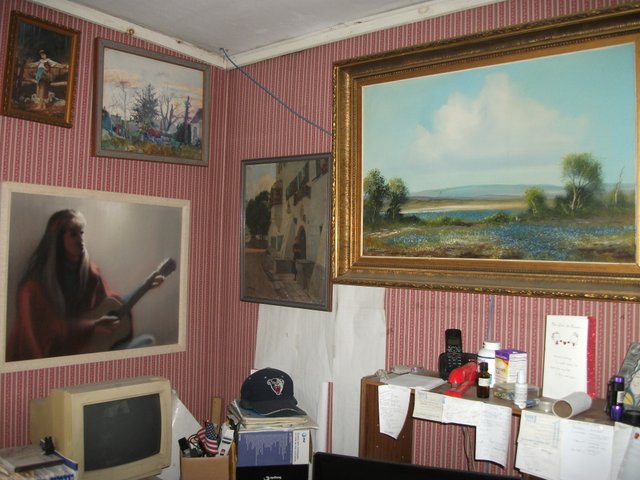
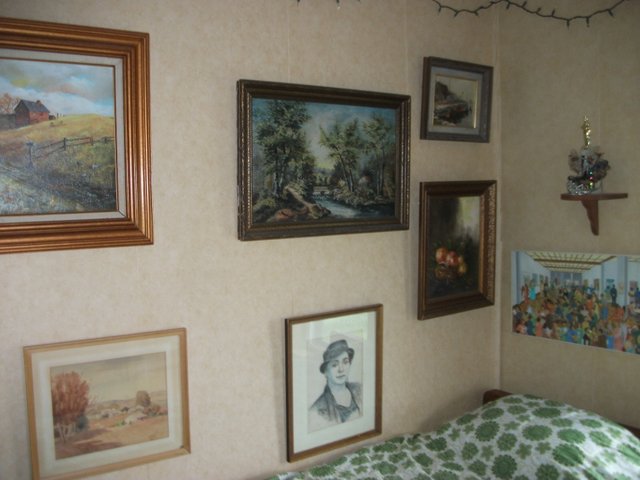
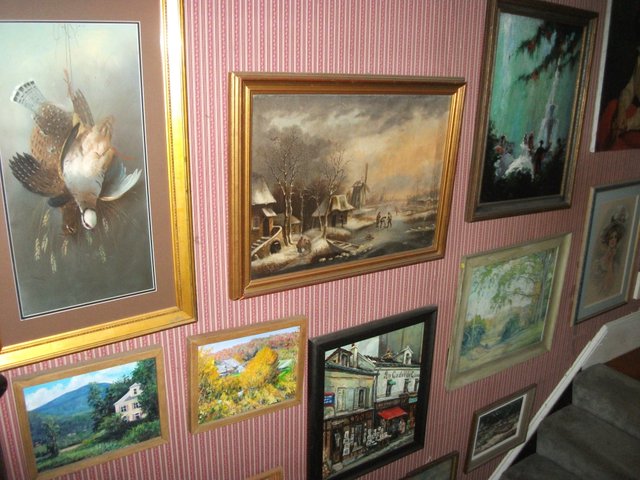
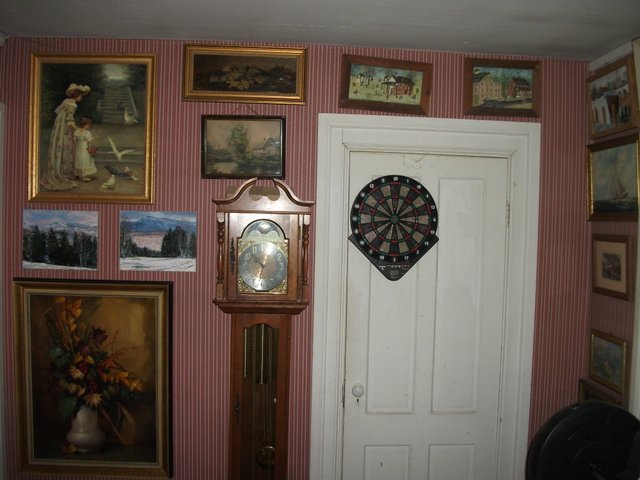
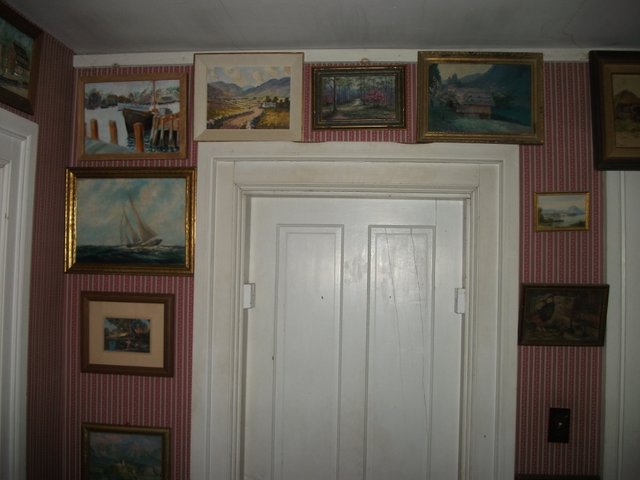
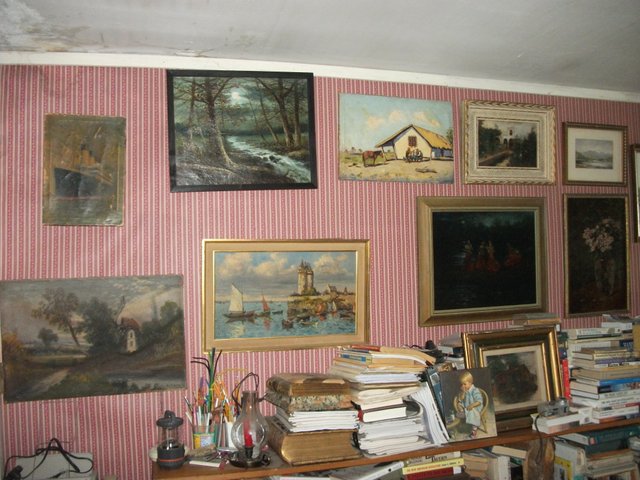
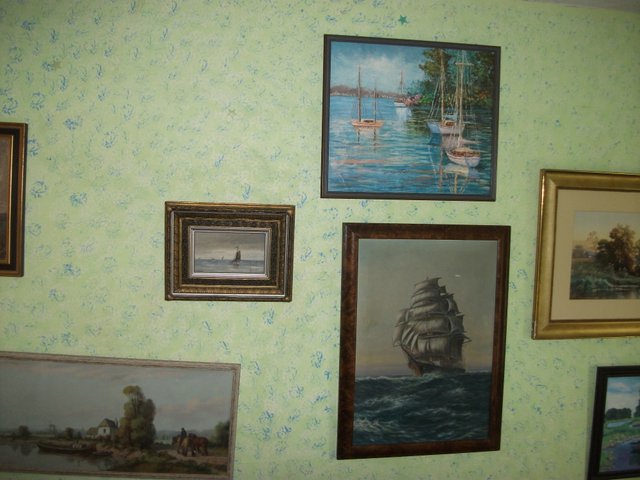
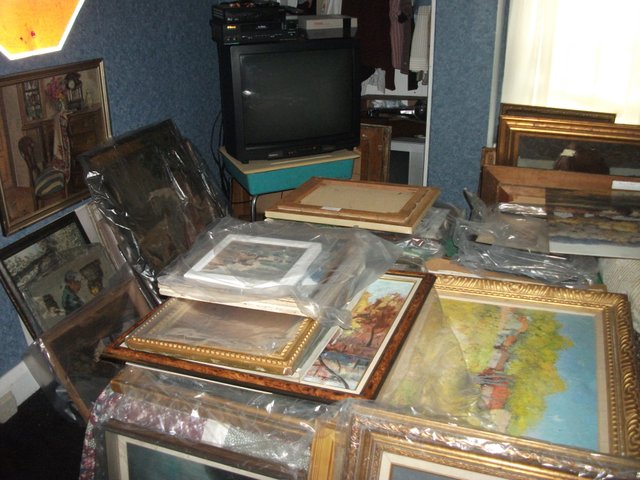
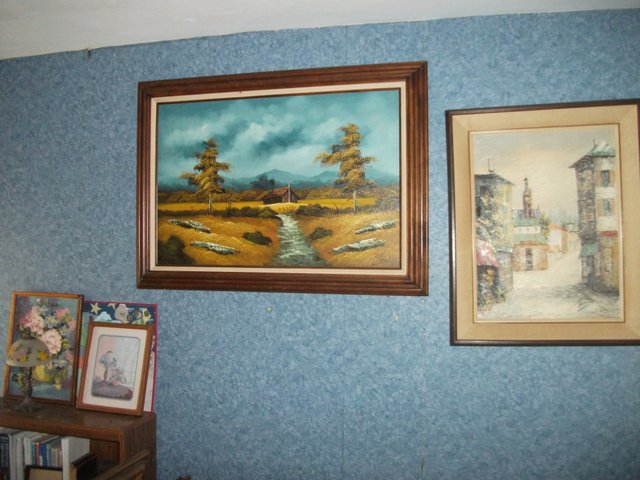
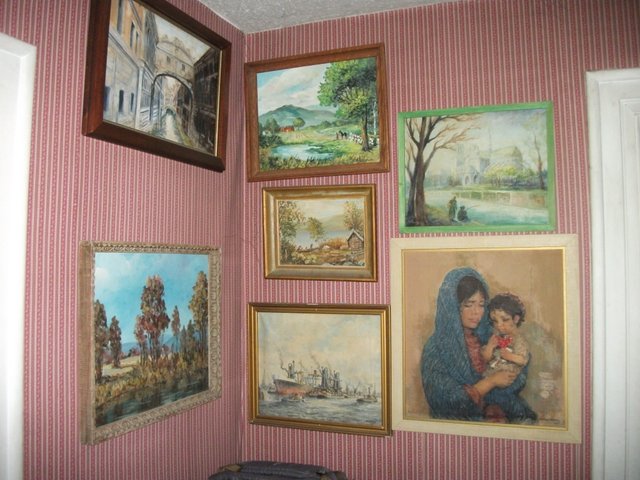
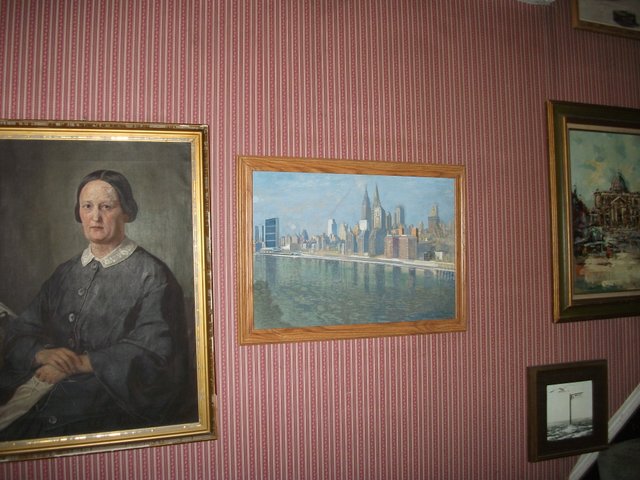
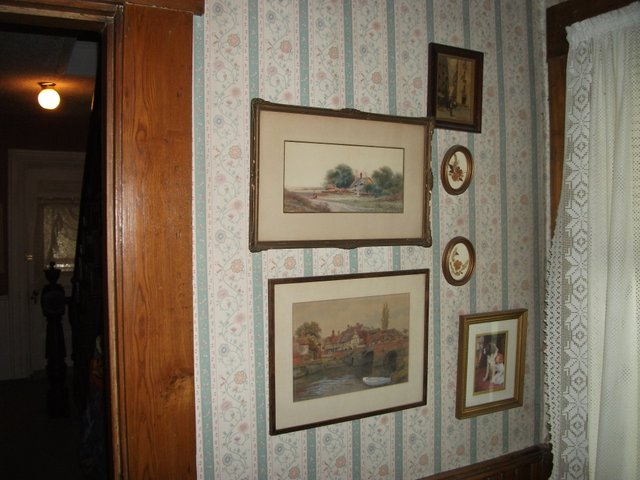
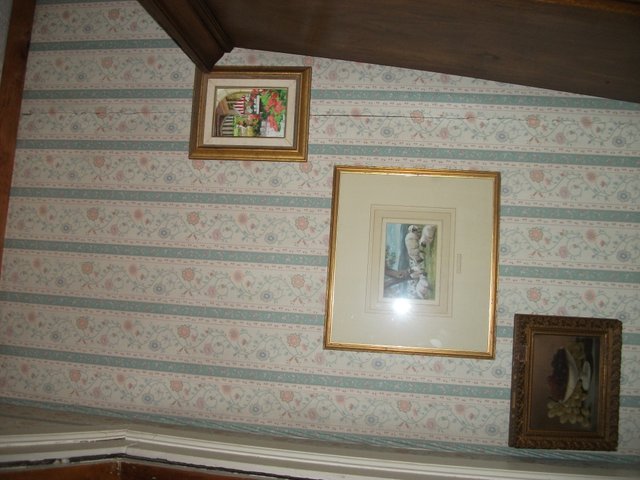
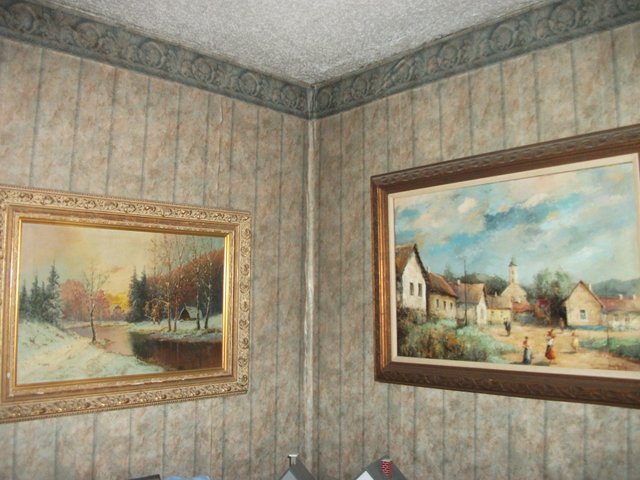
Very good post about buying and selling art. I got into it about 15 years ago. I have a propensity for folk art, but that doesn’t keep me from appreciating other beautiful art or photography. I really need to liquidate some of my art. There just aren’t enough walls to show it all. There is nothing more fun than a good auction and combing through the art. 🐓🐓
Downvoting a post can decrease pending rewards and make it less visible. Common reasons:
Submit
Have you ever thought of selling on eBay? It really is pretty easy... The packing and shipping can be a pain at first until you get used to it, though.
Downvoting a post can decrease pending rewards and make it less visible. Common reasons:
Submit
Yes, have sold many items on eBay in years past. Can not rely on our connectivity here. That being said, it is one of my goals to start parceling it out. Looked to me like you had a piece of folk art above the dart board. Who is the artist? I tried to load your eBay site but to no avail. Good post. 🐓🐓
Downvoting a post can decrease pending rewards and make it less visible. Common reasons:
Submit
Too bad about the connectivity, but more rural is always better, imho..
The artist is Dolores Hackenberger of PA. Not terribly valuable, but very quaint pieces. She is rumored to be admired by the Bush family who reportedly have some of her work in their Kennebunkport compound.
Downvoting a post can decrease pending rewards and make it less visible. Common reasons:
Submit
I like the original one, can I have that one?
I promise to take good care of it.
wow this is such a good post, beautiful paintings, so educational
and a total surprise topic! gladly resteeming this one.
Downvoting a post can decrease pending rewards and make it less visible. Common reasons:
Submit
Well, thank you, Sir Jon. So glad you liked this post.
For $2000, sure, you can have it...lol...and free shipping!
Downvoting a post can decrease pending rewards and make it less visible. Common reasons:
Submit
it doesn't sound like too bad a deal.
I'l have to think about it. lol
Downvoting a post can decrease pending rewards and make it less visible. Common reasons:
Submit